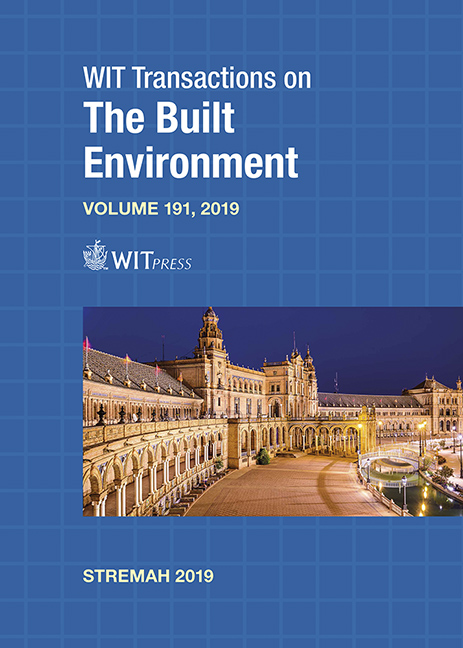USING FIBER-OPTIC SENSORS AND 3D PHOTOGRAMMETRIC RECONSTRUCTION FOR CRACK PATTERN MONITORING OF MASONRY STRUCTURES AT THE AURELIAN WALLS IN ROME, ITALY
Price
Free (open access)
Transaction
Volume
191
Pages
9
Page Range
457 - 465
Published
2019
Paper DOI
10.2495/STR190391
Copyright
WIT Press
Author(s)
IRENE BELLAGAMBA, MICHELE CAPONERO, MARIALUISA MONGELLI
Abstract
This paper shows an application of the photogrammetric 3D reconstruction by SfM (Structure from Motion) technique and Fiber Bragg Grating (FBG) sensors to evaluate the long-term crack propagation and the damage evolution on the Aurelian Walls in Rome. Aurelian Walls were built between 270 and 275 A.C. by the Emperor Aureliano to defend Rome, the capital of the Empire, from barbaric attacks. Originally, they extended for about 19 km, nowadays remains are 12.5 km long and among the longest and best-preserved ancient wall murals in the world. The two adopted techniques offer complementary advantages. By the SfM reconstruction it is possible to acquire the geometry of the studied masonry structure and to detect most relevant cracks where FBG sensors can be installed for permanent monitoring. Moreover, SfM allows to acquire the crack pattern over extended surfaces and to compare its evolution with scheduled repeated measurements. FBG sensors allow continuous monitoring at selected critical locations and offer reference data for correlation of scheduled photogrammetry measurements. 3D Photogrammetric reconstruction by SfM took advantage of hardware and software capabilities of the HPC (High Performance Computing) resources available in ENEA, which are provided by the CRESCO (Research Computational Centre on Complex Systems) infrastructure. FBG sensors were installed in thermal compensation configuration and with both high stability for long-term static measurements and dynamic response capabilities. Experimental data so far acquired are presented with evidence of the preliminary results of the measurement campaign, which is planned to be continued in the long term.
Keywords
structural monitoring, fiber-optic sensors, photogrammetry, SfM technique




